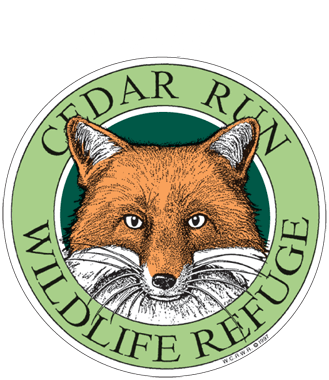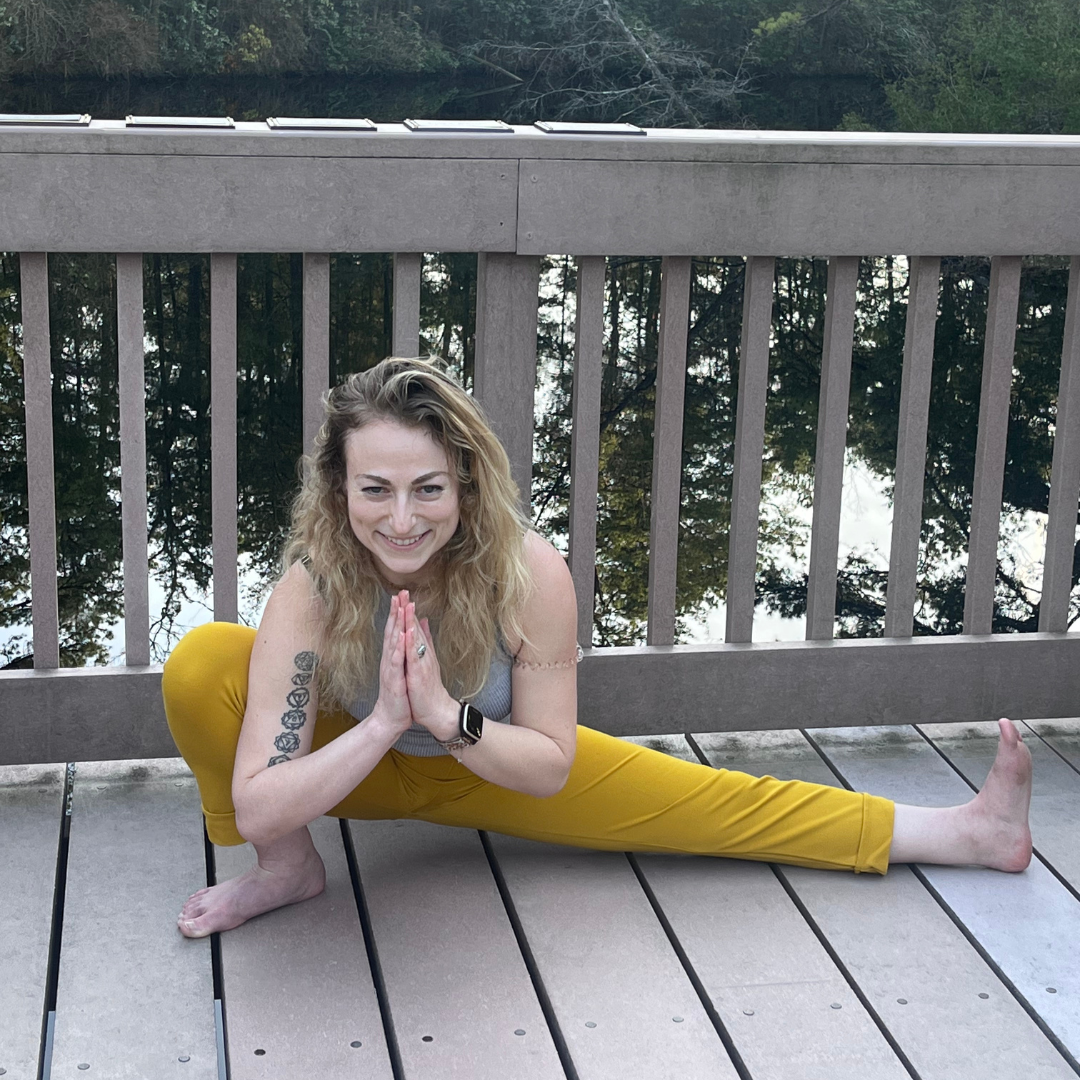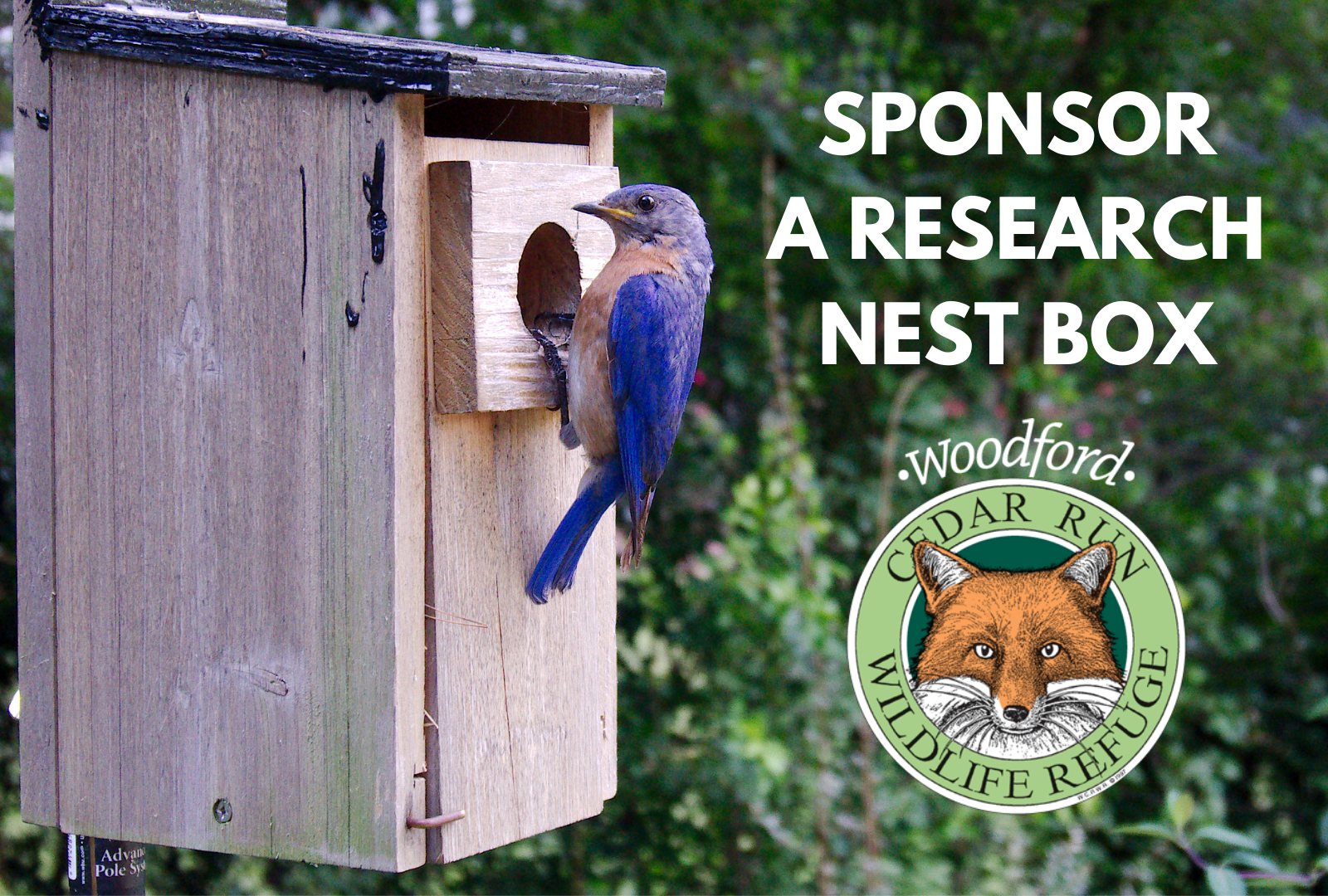 The Eastern Bluebird (Sialia sialis) is a small, lively thrush with a rounded body, short beak, and stumpy tail. Of course, the easiest way to identify a Bluebird is, you guessed it, their blue feathers! The male Bluebirds are a striking, vibrant blue with a rusty red chest, while the female Bluebirds are a buffy brown with tinges of blue and the same rusty red chest.
The Eastern Bluebird (Sialia sialis) is a small, lively thrush with a rounded body, short beak, and stumpy tail. Of course, the easiest way to identify a Bluebird is, you guessed it, their blue feathers! The male Bluebirds are a striking, vibrant blue with a rusty red chest, while the female Bluebirds are a buffy brown with tinges of blue and the same rusty red chest.
While hiking our trails this spring, you may notice them perched or fluttering around our open, grassy areas. That’s because a Bluebird’s favorite springtime snack is small insects and invertebrates, such as beetles, crickets, grasshoppers, worms, snails, and more. But don’t bug out over our blue feathered friends’ diet just yet – these birds are a farmer’s (and gardener’s) best friend! They help manage annoying insect populations and eat pests that may damage our crops and gardens. In other words, we rely on Eastern Bluebirds to help protect a vital food source for us humans.
Why are Bluebirds important?
Eastern Bluebirds show us what successful conservation looks like! In the early twentieth century, Eastern Bluebird populations in the U.S. plummeted due to habitat loss, increased pesticide use, snag removal, and most notably, the introduction of the invasive and incredibly competitive European Starling and House Sparrow, which are cavity nesters just like bluebirds.
In the 1960s, campaigns organized by birders and citizen scientists were established to create bluebird trails lined with optimally designed bluebird boxes to alleviate nesting competition and allow for close population monitoring. Now, with a current-day breeding population of about 23 million, Eastern Bluebirds are doing much better! Conservation efforts today are still just as vital for the continued success of Eastern Bluebirds, which is why we have established, in affiliation with the Cornell Lab for Ornithology, our very own Eastern Bluebird NestWatch Program here at Cedar Run!
How Bluebirds choose their home
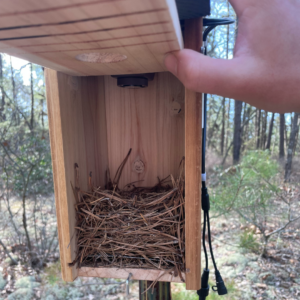
The blue-collared bachelor tries desperately to search for a place to call his own. He wants the American dream- the house, the wife, the family. But his species’ population is down 92% across the country. Hole after hole he flies, carrying his briefcase of dry grasses and pine straw. He briefly dances with excitement! Fluttering his wings and bopping about, hoping he may catch the eye of a red-breasted suitor and elated that he may have finally found his own home, only to discover that the cavity is occupied. The immigration of the European Starling has saturated an already limited market, caused by land development to make room for the giant human structures, along with the hardships induced by their fascination with insect-free lawns. He tries one more time, grasses, pine needles, and now a bluebird lady in tow.
Life Stages of Bluebirds

It is no secret that humans alter the natural order of every habitat on planet Earth. There is no ecosystem in our modern world that is free from anthropogenic impacts. In order to thoroughly understand how our actions are affecting different organisms, we must first understand their natural life cycle. Eastern bluebirds’ lifecycles have been well documented through the monitoring of nest boxes. You have the ability to witness these birds transform from tiny eggs to fully mature adults in your very own backyard (or here at Cedar Run!) In just a few short weeks, we will begin seeing nests in our bluebird boxes.
Become a Nest Box Sponsor!
Be part of the inaugural year!
The Sponsor-A-Reseach Nest Box Project is a symbolic sponsorship of one of our research nest boxes.
We launched this program in 2024 to aid in Cedar Run’s mission statement of habitat preservation and education. The goal of the sponsorship would be to develop the relationship between the sponsors and the various bird species we encounter at Cedar Run.
The funds accrued from the program would be used for our Bluebird program and the future research initiatives of Cedar Run.
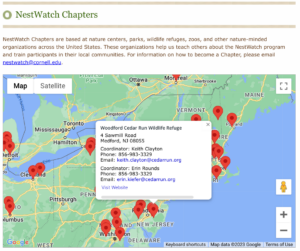
Last year Cedar Run, attained a Chapter Certification through the Cornell Lab of Ornithology! The first way we applied this certification was through the reintroduction and revamp of our Bluebird program in 2023! Our data moving forward from then was to be submitted to the NestWatch program and given an extra stamp of approval before entering all of Cornell’s live results.
Benefits & FAQs
Why be a part of this conservation research initiative?
The Woodford Cedar Run ‘Sponsor a Research Nest Box’ Program was launched in 2024 to bring people closer to nature and bridge the gap between conservation and education.
Conservation and Research are things you commonly hear the United States Fish and Wildlife Services say, but there are plenty of additional ways to get involved. By sponsoring a Cedar Run research nesting box, you are impacting and connecting with a local non-profit, providing input and ideas to our team, and aiding in the future of Cedar Run’s conservation efforts.
In 2022, with only 27 research nest boxes (over 35 in 2023!), we experienced over 28 total nesting attempts across 4 different species (Eastern Bluebirds, Carolina Chickadees, Tree Swallows, and House Wrens). These 28 nesting attempts produced a total of 127 eggs and 83 successful fledglings!
By investing in this sponsorship, the Cedar Run Research Team aims to provide you with an interactive experience that you can love and share, as well as protect our native species for years to come!
How long does this sponsorship run?
This annual sponsorship runs runs from the time of purchase to December 31st of that year.
Want to be a “frequent flyer”? We can certainly send you information towards the end of the year about upcoming research sponsorship opportunities.
What are you using the funding for?
Sponsorship donations will be funding the general upkeep of Cedar Run’s Bluebird Trail and it’s nest boxes, Screech Owl nest boxes, and waterfront nest boxes. In addition, the funding raised helps be able to support future research and conservation initiatives of Woodford Cedar Run!
What are the sponsorship benefits?
Be in the know of our research efforts!
- You will receive trail updates from the Cedar Run Research Team flying into your email inbox!
- 7 total email newsletters from April-September, and a recap of the project in December
- Email newsletters will include pictures, videos, and current updates.
- Your name is proudly displayed on our website!
- Your name is proudly displayed on our final report!
- Making an impact on Cedar Run’s conservation and research efforts.
Can I go see my name on my box?
This is a symbolic sponsorship where donors help raise funds to aid in avian conservation. This means no names will be assigned to specific nest boxes.
- We will proudly display our supporters of this project on the Cedar Run website.
- If you would not like your name featured, please check that you would like to remain “anonymous” when selecting your sponsorship.
Am I able to go do my own nest check?
In short, the answer is NO. The Woodford Cedar Run Research Team has a tight schedule and per the Standards set by the Cornell Lab of Ornithology, nest checks can only happen at specific times.
If these nests are improperly checked outside of our standard nest checks or from any person outside of the Cedar Run Research Team, several risks will affect our conservation research efforts:
- We may run the risk of losing our good standing Chapter Certification through The Cornell Lab of Ornithology NestWatch.
- You may risk orphaning wildlife babies if disturbing the nest.
- You may risk the opportunity for experiences with the Research Team and beyond as a supporter of Cedar Run, if you are found disturbing these nest boxes.
Will I have the opportunity to walk the Bluebird Trail?
The Bluebird Trail is part of Cedar Run’s White & Blue Trail so you can view nest boxes from a distance.
We graciously ask that you keep at least 10 feet away from the nesting boxes (Tree Swallows can be very protective!).

Price: $50 on Bluebird Trail | 34 Nest Boxes
- Maximum of two sponsors per research box
- 68 Sponsorships opportunities available
Other Nest Box Sponsorships

Screech Owl Nest Box
Eastern Screech Owls are a species in decline in most of the Eastern United States due to forest fragmentation and urbanization. Screech Owls are tree cavity nesters, which makes a bird box a perfect home! Many birds in forest ecosystems are tree nesters, and supplementing a nest box can lower competition and aid in the recovery of the species.
Price: $100 | 3 Nest Boxes
- Maximum of two sponsors per research box
- 6 Sponsorships opportunities available
FULLY SPONSORED for the 2024 Season!

Waterfront Nest Box
Many species of birds nest in or around water due to the plethora of food and reduced potential for predation. Some species commonly found in this type of nest box are Tree Swallows, Eastern Bluebirds, Wood Ducks, and even the occasional Purple Martin. These boxes are placed 3 feet above the water on posts and are unreachable from land.
Price: $100 | 10 Nest Boxes
- Maximum of two sponsors per research box
- 20 Sponsorships opportunities available
Our 2024 Research Nest Box Sponsors!
Thank you for becoming a “data detective” and supporting our conservation research efforts.
Bluebird Nest Box Sponsors
- Laura Bishop
- Frank Bonfrisco
- Gisele Busch
- Krista Carboni
- Justin & Tina Cooper
- James Davis
- Cole & Diane Henry
- Ryan Horner
- Lauren Goodfellow
- Leigh Martin
- Chris & Caryn Miller
- Trish O’Brien
- Deirdre Radwill
- Elizabeth Reade Photography
- Lori Sears
- Melissa Sower-Post
- Laura Tambini
- Michael Tori
- Katie Woolford
- Lee Yeash
- A Feathered Friend Research Advocate
- A Feathered Friend Research Advocate
- A Feathered Friend Research Advocate
- A Feathered Friend Research Advocate
- A Feathered Friend Research Advocate
- A Feathered Friend Research Advocate
Screech Owl Nest Box Sponsors
- Bobbie Dandrea
- Linda Merry
- Jill Webb
- Michele Weckerly
- Lee Yeash
- A Feathered Friend Research Advocate
Waterfront Nest Box Sponsors
- Nathan Hammond
- Heidi Grundeland
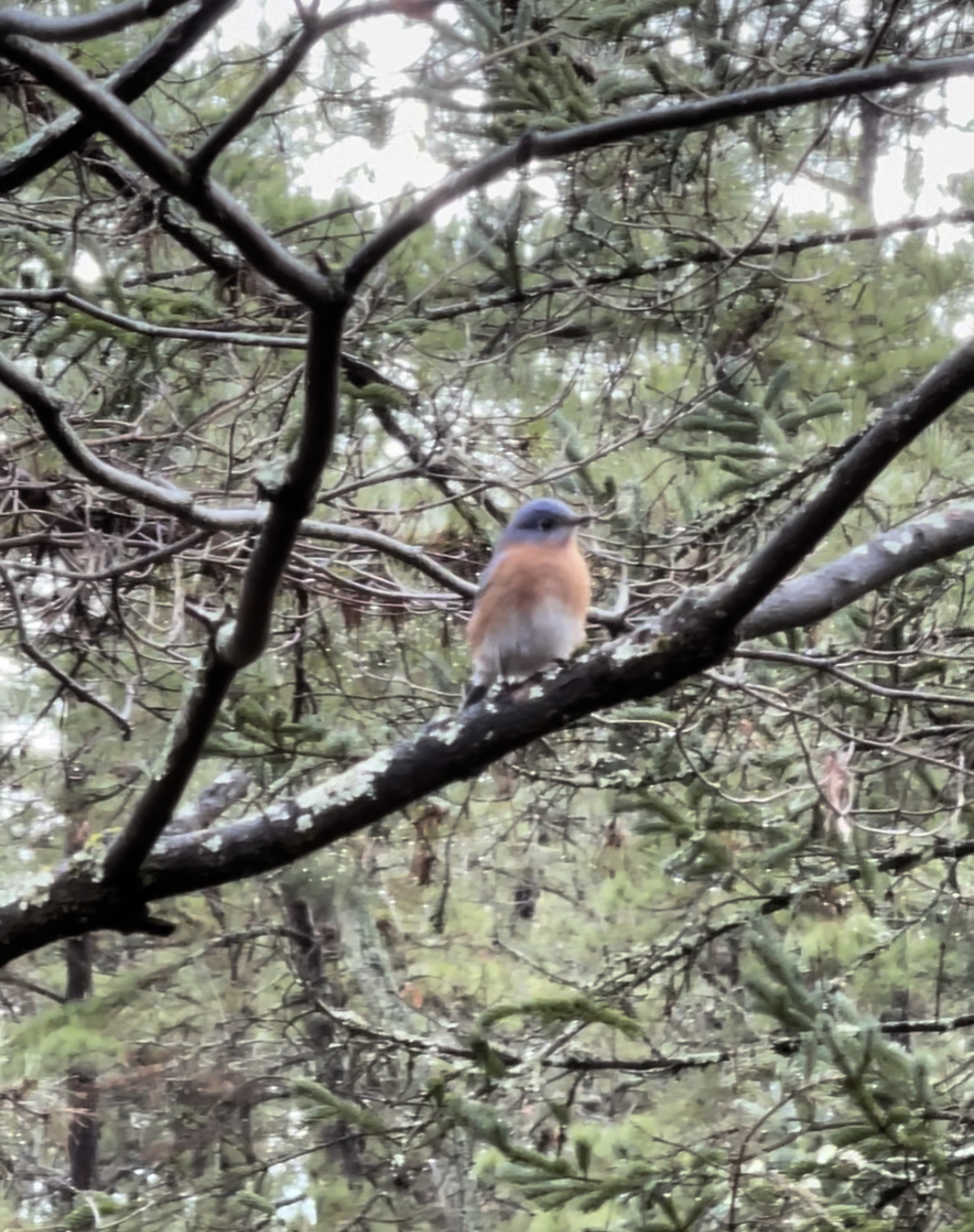
Help us reach our goal & make a difference with wildlife conservation efforts!
Please note: Current donation progress will be updated when gifts are processed. Your gift may not show up immediately after sending in your donation.
